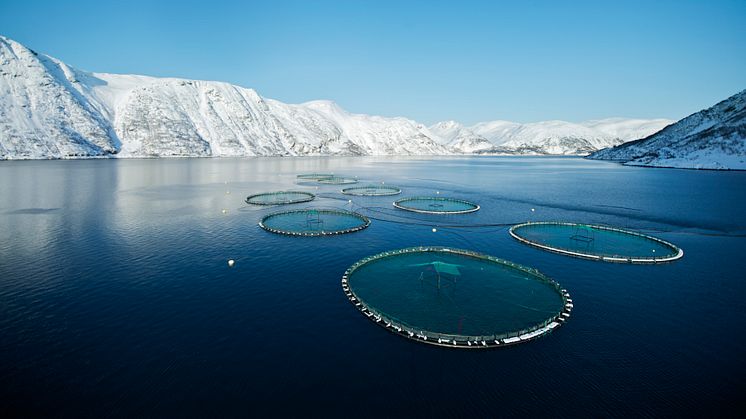
Press release -
Value of Norwegian salmon exports rise sharply
Norway exported salmon worth NOK 4.15 billion in February. This is an increase of 26 per cent or NOK 863 million compared with February last year.
71,837 tonnes of salmon were exported from Norway in February. This is a reduction of 0.7 per cent or 472 tonnes from the same month last year.
"A reduction in the supply of salmon at the beginning of the year, strong demand in our neighbouring markets and a favourable foreign currency situation are driving the price for salmon and consequently the value to new heights," says Paul T. Aandahl, Analyst with the Norwegian Seafood Council.
Continued strong price for salmon
Average export price for fresh whole salmon was NOK 55.05 per kg in February. This is a price increase of 31 per cent or NOK 12.88 per kg compared with the same month last year. The price is about the same as in the preceding month.
Supply to the EU increases in both volume and value
Norway exported salmon worth approximately NOK 3 billion to the EU in February. This is an increase of 32 per cent or 735 tonnes from the same month last year. The export volume to the EU, measured in product weight, was 54,351 tonnes in February. This is an increase of 1,226 tonnes or 2 per cent from last year. Measured by value, France, Poland and Denmark were the largest purchasers of Norwegian salmon in February.
Reduced exports to Eastern Europe
Norway exported salmon worth NOK 74 million to Eastern Europe in February. This is a decrease of 14 per cent or NOK 9 million from February last year. Measured by volume, 2,120 tonnes of trout were exported to the region in February. This is a reduction of 11 per cent or 274 tonnes from February last year.
Turkey was the largest export market in Eastern Europe in February, measured in value. NOK 24 million worth of salmon was exported, and this was 17 per cent less than in February last year. 420 tonnes of salmon were exported to Turkey in February, versus 722 tonnes in February last year.
Norway exported salmon worth NOK 21 million to Ukraine in February. This is an increase of nearly 70 per cent compared with February last year. 797 tonnes of salmon were exported to Ukraine in February this year, compared with 349 tonnes in February last year.
Increases to Asia and the U.S.
NOK 715 million worth of salmon was exported to Asia in February. This is an increase of 18 per cent from February last year. 11,322 tonnes of salmon were exported to Asia in February. This is a reduction of 9 per cent or 1150 tonnes from February last year.
Norway exported salmon worth NOK 240 million to the U.S. in February. This is an increase of 36 per cent from February last year. Measured in volume, exports were 3,038 tonnes in February. This corresponds to an increase of 10 per cent or 273 tonnes compared with February 2015.
Strong increase in trout exports
Norway exported trout worth NOK 288 million in February. This is an increase of 100 per cent or NOK 144 million from February last year. The volume similarly increased by 100 per cent, to 6081 tonnes. The average price for fresh whole trout in February was NOK 47.24 per kg which is 17 per cent higher than for February last year. The export share for fresh whole trout amounted to 51 per cent of total sales of trout. The export share for frozen whole trout amounted to 41 per cent in February 2016, and the price was 7 per cent lower than February last year. Poland was our largest market for trout in February, followed by Belarus and Japan.
Topics
Categories
The Norwegian Seafood Council works with the Norwegian fisheries and aquaculture industries to develop markets for Norwegian seafood through local market intelligence, market development and reputational risk management. The Seafood Council is headquartered in Tromsø and maintains local representatives in twelve of Norway's most important international markets. The Norwegian seafood industry finances the activities of the Norwegian Seafood Council via a tariff on all Norwegian seafood exports.
The Norwegian Seafood Council is a public company owned by the Ministry of Trade, Industry and Fisheries.

